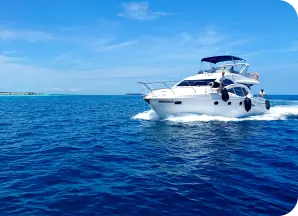How to navigate the open seas

Outlines:
- Introduction
- Understanding Yacht Navigation
- Boat Safety
- Best Practices for Sea Travel
- Proper Use of Navigation Equipment
- Communication
- Proper Maintenance
- Safety Equipment
- Local Regulations
- Environmental Protection
- Conclusion
Introduction
Yacht navigation is an essential part of sea travel, whether it's for leisure or work purposes. Whether you're an experienced sailor or new to the world of yachting, it's crucial to understand the basics of yacht navigation and boat safety to ensure a smooth and enjoyable journey. Within the pages, we'll outline some useful tips and guidelines for navigating the open seas with safety and efficiency in mind.
Understanding Yacht Navigation
Navigational Tools: This section will discuss the various tools used in yacht navigation, including charts, GPS, compasses, and electronic navigation systems. We will explain how to use each tool and interpret the information they provide.
Chart Reading: This section will provide a detailed guide on reading nautical charts, including understanding symbols and abbreviations, calculating distance, and plotting courses.
Weather Forecasting: Understanding the weather conditions is crucial in yacht navigation. This section will discuss how to obtain accurate weather forecasts and interpret the information to make informed decisions on sea travel.
Navigation Regulations: This section will cover the legal requirements for yacht navigation, including navigation rules, safety regulations, and equipment requirements.
Boat Safety
Preparing for Departure: This section will discuss the safety precautions before setting sail, including checking the boat's condition, fuel and water supplies, and safety equipment.
Emergency Procedures: This section will provide guidelines on what to do in an emergency, including man overboard, fire, flooding, and medical emergencies. We will also discuss the importance of a comprehensive emergency plan.
Communication: Effective communication is essential for boat safety. This section will cover the different communication methods used in yacht navigation, including VHF radio, satellite phones, and distress signals.
Navigation and Collision Avoidance: This section will discuss how to navigate safely in busy waterways and avoid collisions with other vessels.
Best Practices for Sea Travel
Safety Tips: This section will provide some general safety tips to ensure a smooth and enjoyable journey, including wearing appropriate clothing, avoiding alcohol consumption, and avoiding fatigue.
Environmental Responsibility: As ocean lovers, it's our responsibility to protect the environment. This section will provide some best practices for eco-friendly sea travel, including reducing waste, avoiding pollutants, and respecting marine wildlife.
Culture and Etiquette: This section will provide some guidelines on cultural and etiquette practices to follow when traveling in foreign waters. We will discuss some do's and don'ts to ensure respectful and responsible behavior.
Proper Use of Navigation Equipment
Aside from being aware of the weather and clearly understanding the chart, a yacht captain must also know how to use navigation equipment such as GPS, radar, and AIS (Automatic Identification System). These tools are essential in navigating the open seas as they provide information about the yacht's location, surrounding vessels, and other potential hazards.
Keeping these tools well-maintained and regularly checked is important to ensure they are in good working condition. Knowing how to use these tools properly can also help captains to avoid potential collisions, especially in crowded areas where numerous vessels are navigating the same area.
Communication
Communication is also an important aspect of yacht navigation. Having proper communication equipment on board, such as VHF radio and satellite phones, is essential to stay connected with other vessels, coastguards, and emergency services.
Yacht captains must also know radio protocols and properly use their communication equipment to transmit and receive messages. This includes using the correct channels and delivering distress signals in emergencies.
Proper Maintenance
Proper maintenance is also a crucial aspect of yacht navigation. Before setting sail, yacht owners and captains must ensure that the yacht is in good condition and that all equipment is in proper working order. In addition, regular checks and maintenance must be carried out to ensure the yacht's safety, including the engine, sails, rigging, and navigation equipment.
Safety Equipment
Safety equipment is an essential component of yacht navigation. Every yacht in Dubai must carry the necessary safety equipment to ensure the safety of passengers and crew in case of emergencies. This includes life jackets, rafts, fire extinguishers, distress signals, and first aid kits.
Yacht captains must also ensure that all crew members know the location and proper use of safety equipment. Regular safety drills must also be conducted to ensure everyone on board knows what to do in emergencies.
Local Regulations
Yacht navigation also involves compliance with local regulations and laws. Rules and regulations related to navigation, safety, and environmental protection can differ among various countries and regions. Therefore, it's essential for yacht captains to research and understand these regulations before embarking on a voyage.
Some countries may also require permits or licenses for yacht navigation. Obtaining these permits and complying with local regulations is important to avoid legal complications or penalties.
Environmental Protection
Lastly, yacht navigation also involves environmental protection. Yacht captains must be aware of their yacht's impact on the environment and take measures to minimize this impact. This includes proper waste disposal, avoiding anchoring in sensitive areas, and avoiding excessive speed in areas with marine wildlife.
Conclusion
Navigating the open seas can be a challenging and rewarding experience for yacht owners and captains. However, it's essential to prioritize safety and be aware of potential hazards, such as adverse weather, navigational challenges, and other vessels. Therefore, yacht navigation and boat safety are crucial components of sea travel.
Understanding the basics of yacht navigation, boat safety, and best practices for sea travel can help ensure a smooth and enjoyable journey. By adhering to the advice and guidance offered here, you can navigate the open seas confidently and responsibly, taking in the ocean's beauty and protecting yourself and the environment.



